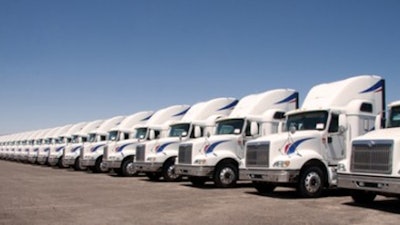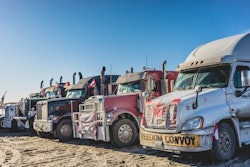
The commercial vehicle and trucking industry is the backbone of the supply chain and the U.S. economy, hauling 72.5% of all freight transported in the United States in 2019. And, during the Coronavirus disease (COVID-19), drivers became the lifeline of the economy, fueling the upsurge in online shopping and delivering vital supplies to the front lines. Yet despite significant industry retention efforts, including increases in flexible hours, better benefits and dramatic pay increases, the unfortunate and massive driver shortage remains.
What are the driving forces behind the systemic massive shortage and turnover issues that plague the fleet industry? Most cite long driver hours, weeks at a time away from home and long periods of solitude, to name a few. And, while the industry takes important measures to increase retention efforts, many are missing a critical component of employee satisfaction -- positive feedback.
Unfortunately, the process to evaluate truckers is outdated, traditionally penalizing negative outcomes, such as accidents and unsafe driving, as opposed to recognizing safe driving behaviors. So, in addition to the mentally challenging aspects that are inherent in trucking and delivery, drivers have the added pressure of negative performance reinforcement added to their everyday employment strains. The cherry on top.
But, what if fleets had the ability to reward excellent driving behavior as part of their everyday business practices? Not only would it foster happier drivers - everyone wants to be told they are doing a great job - according to Skinner’s Law of Operant Conditioning, which states the consequences of a response determine the probability of it being repeated, it would also create safer drivers. A win-win for the driver, fleet operator, road safety and the overall economy.
Technology designed with positive reinforcement
Using artificial intelligence (AI) and edge computing technology, combined with sophisticated in-cab visual devices, today’s forward-thinking fleet operators are learning more about driver behavior and are able to recognize and reward their safe drivers. Further, incorporating driver awareness tools into trucks can help coach risky behavior, minimizing insurance claims, distracted driving incidents and driver turnover.
Improved fleet efficiency and profitability
AI and video analytics not only create teachable moments for drivers and fleets to learn from and improve driving performance, but also help maintain and reduce insurance costs. For example, the average cost for a collision with injury is $74,000, creating an environment that rewards organizations that use video telematics to present all incident factors and decrease potential litigation.
A study of more than 10,000 crashes of buses and heavy trucks estimated that fleet video telematics reduce crashes by 35%. There are many conditions and factors that lead to road accidents; however, multiple research studies show that 80% of car-truck accidents are caused by passenger vehicles. With the use of video telematics, fleets can produce unbiased accounts of what happened in a timely manner.
Fleet operators now have the ability to easily exonerate drivers from unfair claims, quickly respond to insurance companies and improve management communication. The process of communicating in the supply chain was outdated, relying heavily on word of mouth, until recently; now operators have a better idea of when fleets will complete trips and more efficiently communicate with clients.
Fleets that reward positive driving behaviors incentivize drivers to want to do well, which fosters driver loyalty, reduces accident claims, thereby reducing costs and creating safer roads. Fleets are also able to provide group recognition, rewarding teams, in addition to individuals, for safe driving. And ultimately, it is significantly less expensive to reward existing drivers than it is to recruit new ones. And, all of this positive reinforcement provides a stronger foundation for the backbone of the supply chain.


















